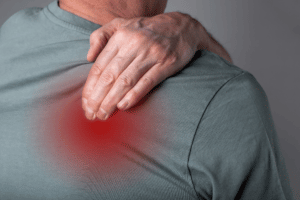Although back injuries are the leading cause of injuries for maritime workers, shoulder injuries account for millions of doctor and hospital visits each year after seamen are exposed to unsafe working conditions. Many of these shoulder injuries could have otherwise been prevented if the workers were provided with the correct training and equipment.

Common Maritime Shoulder Injuries
In maritime work, seamen can experience shoulder injuries from repetitive use and constraint strain on the shoulders from:
- Excessive twisting and lifting
- Continuous lifting
- Repetitive overhead lifting
In addition, a multitude of shoulder injuries stem from trauma and accidents, including:
- Slipping and falling
- Working around unsafe equipment
- Improper and/or incomplete safety training
- Equipment crashing into the shoulder area
- Winches jerking and pulling the arms and shoulders
When the aforementioned situations occur, seamen can experience a range of shoulder injuries. Some injuries are less serious than others, but regardless of how minor or severe the damage is, any type of shoulder injury should be reported immediately. Some of the most common shoulder injuries that maritime workers experience include:
- Stiff and/or frozen shoulder
- Tendonitis
- Dislocation
- Sprains
- Damaged collarbone
- Torn tendons in the shoulder area
- Fractures
- Rotator cuff strain
- Glenoid labrum tear
- Bursitis
- Shoulder instability
Medical Treatment for Shoulder Injuries
After a shoulder injury, a doctor will typically perform a complete medical history and inquire about work conditions, how long the problem has persisted, and any previous shoulder conditions. A physical examination and tests usually follow, which can include:
- X-rays: X-rays will allow the doctor to see view any injuries around the shoulder bones and joints.
- Arthrogram: An arthrogram is similar to an x-ray, but a dye is injected into the shoulder area in order to pinpoint the muscles and tendons that surround the shoulder joints.
- Arthroscopy: An arthroscopy is a surgical procedure in which a small incision is made in the shoulder area. The physician can then use a small camera to view soft tissue injuries around the shoulder that can’t be detected by an X-ray alone.
- CT scan: A CT scan, technically known as a computed tomography scan, allows physicians a more in-depth view of the shoulder injuries. CT scans are typically used in conjunction with X-rays.
Once the medical history and medical examinations are completed, the physician will be able to determine the best courses of treatment, which can include medication, surgery, and activity changes. Treatment will greatly depend on the severity of the injury.
It’s important to note that shoulder injuries caused by improper safety training or any other type of employer negligence may be covered under general maritime law. General maritime law mandates that the party responsible for the injuries is liable for all damages, including lost wages and medical expenses. Again, it’s imperative to report your injuries and seek treatment immediately for your best chances in being covered under maritime law.
In addition, if you’re experience shoulder pain, take as much time to rest as possible. If you continue to exert pressure on an injured shoulder, you can risk permanent damage.